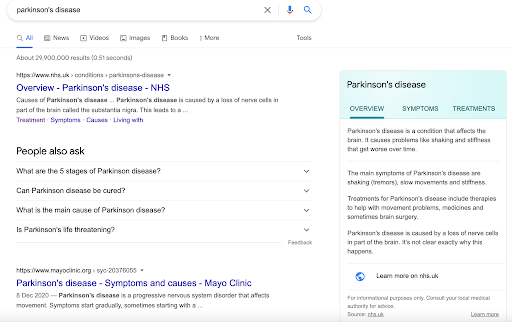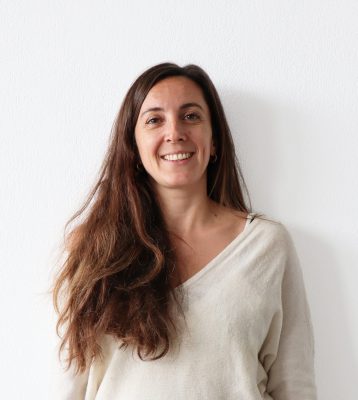We spoke with Nick Vines, SEO Consultant at Torchbox, as part of our project to share what Oncrawl users are doing in SEO in their day-to-day jobs.
Nick Vines, SEO strategies for nonprofit organisations
“I am in charge of the SEO strategy of a number of nonprofit websites. I help them to achieve better visibility and increase donation revenue”

Nick began his career in the SEO industry about seven years ago. He started as an intern and worked on a skateboarding database for skate parks in the UK. The role was mainly data entry, but it opened up his interest for SEO.
After three years of experience as SEO Account Manager at Havas, he worked for a year and a half at Croud. Nick is now an SEO Consultant at Torchbox.
Making a difference and creating impact
“It’s much more fulfilling working in the nonprofit sector than it is in e-commerce or anything else.”
Nick has always worked in agencies, but his arrival at Torchbox, an agency specialised in the nonprofit sector, has given him a different perspective on SEO.
Nick: It’s much more fulfilling working in the nonprofit sector than it is in ecommerce or anything else. For example, there’s a lot of love for the NHS in the UK, it’s such a huge institution. It is the number one source of reliable health information in the UK, and also for many other countries across the globe.
Being part of the team that makes sure that people can get the information that they need at the time that they need it, creating content that helps people with their medical needs, is just such a privilege.
Understanding the SEO for the nonprofit sector
“We’re really big on what we call impact SEO: choosing the things that will make the biggest difference, and then really focusing on those.”
Oncrawl: How has working for nonprofit organisations changed your approach to SEO?
Nick: I just had to learn on the job, there’s a whole different language that you use to talk about metrics, traffic,etc. You talk about how it’s an organisation, it’s not a company. Traffic is not ‘traffic’, it’s awareness, it’s like you’re spreading awareness about your causes you’re not just trying to drive clicks. There is a person behind every search. They are trying to find reliable information rather than just trying to buy something.
Sometimes traffic isn’t everything. For example with some of our medical condition clients – we don’t always fight to be position number 1 for conditions keywords. Trying to outrank the NHS is impossible, so we put the user at the heart and say: if the user is getting information they need at that moment, then does our medical awareness charity really NEED that click? The answer is probably no, so we feel that we can use the SEO budget more wisely elsewhere. Maybe to increase visibility for support or donate keywords. We let the NHS have that position because the user is really at the heart of it all.
Oncrawl: Has that changed how you do SEO? What is the most challenging part?
Nick: The most challenging thing is the budget. Charities don’t have as much money to spend as big ecommerce brands. But they see the value of SEO, and it’s very easy to communicate that. Budgets are small so it’s a very different style of working to how I have done in the past with other agencies, where the budgets are much bigger.
The budgets are smaller, so we have to really dial in on what the big issues are and then focus on those. Sometimes that means leaving some issues unaddressed. We focus on the things that will have the most impact. We’re really big on what we call impact SEO: choosing the things that will make the biggest difference, and then really focusing on those.
Oncrawl: How do you prioritize and focus on the most important tasks?
Nick: We just use two metrics: how much impact it will have on visibility, combined with how much effort it will take to implement that.
So if something’s high impact and low effort, then that’ll be right at the top of the list of prioritization. And then alternatively, if it’s low impact and high effort, that will be at the bottom. That’s pretty much the best way to do it, and then in terms of deciding both of those, scoring those just comes down to experience.
Oncrawl: Do you also work on migration projects?
Nick: Torchbox created Wagtail, an open source CMS written in Python and built on the Django web framework. I have overseen site migrations for NASA, Tate, GOSH, Action for Children, Marine Conservation Society, Royal College of Arts and Chatham House.
I’ve launched 7 sites this year. We have a specific process that we follow. It doesn’t matter whether it’s a huge site or a small site we still go through the same process and obviously bigger sites come up with more challenges, but we’re experts at this.
Making SEO and information architecture work together
Charities usually have a lot of informational content. The real challenge is to organise it properly and make sure the site ranks well on the queries that are important.
Nick: I spend the most time on content and information architectures. I think maybe across the sector, for all websites I find that the way the content has been managed and structured is key, that’s where most of the quick wins come from.
We worked for Islamic Relief UK. We’ve spent a lot of time grouping the content according to various different categories, whether that’s religious content or non religious content.
For Ramadan, we built a lot of content hubs to do with various different topics: Zakat, Fidyah, Kaffarah… and building these out whereas before they would just have singular landing pages.
We built these rich content hubs and we saw a very significant uplift in traffic and revenue. Our content recommendations saw Islamic Relief UK move into position 1 for almost all of the key terms that we targeted.
Search specificities: how to find a methodology and develop an effective strategy
Unlike other sectors where the purpose is often the same (purchasing), the requests from charities can be very specific to their needs. Nick must adapt and find practical solutions to these issues.
Oncrawl: What was one of the challenges you met with one of your clients?
Nick: We worked with the mental health charity, Mind. They came to us with a very unique problem, which was trying to target children and young people with mental health information. So one of the biggest things was trying to understand the difference in the way that children and young people search for mental health information compared to adults; and then tailoring their site to the two different audiences.
I had to come up with a methodology to basically try and figure out how children and young people search compared to adults, and then come up with a strategy that was tailored to children and young people. I think that was really hard, and that was probably the hardest challenge I’ve had to overcome.
Oncrawl: Can you tell us more about the methodology you use to do that?
Nick: The conclusion is probably quite interesting as well. We looked at all the inbound search data, and then removed any query that contained the word child or teenager, or any age-identifying keywords, in fact.
Obviously, there were loads of keywords that had these words like: “children’s mental health support” or “teenage mental health problems”. Removing keywords that have that age identifier allowed us to see the types of keywords that were being used where users weren’t self-identifying with their age. Then, we were able to look at the types of keywords that users have used to arrive at the existing children and young people mental health hub.
That started this long process that helps us to understand the different ways that children search for mental health information and then the conclusion was essentially that we would then rely on personalization to surface the correct parts.
We had to rely on the fact that Google would understand that this person searching was a child or a young person. So we optimized that hub specifically for that audience, and then just hope that the gap gets filled. We’re currently in the process of monitoring that and seeing how that goes.
Different challenges, different changes
Being that the nonprofit sector is very unique, major events in the wider SEO world sometimes impact nonprofits differently. On the other hand, some very specific changes related to the sector can have important consequences for their KPIs.
Oncrawl: Did you see any changes on the websites you are working on following the latest Google updates?
Nick: I haven’t seen any significant movements for any of my clients but I feel that is due to the nature of the charity sector. The sites are already very high quality, there’s not that much spammy techniques that are being used on any sites like this, because of the need to have accurate information.
I think the thing that really rocked a few of our clients is the health cards update, when these health cards started to appear for medical condition searches:

Image source: Google, SERP with Feedback feature
If you search for conditions like Parkinson’s disease, it will then come up with a custom featured snippet that links to the NHS and tells you about the symptoms, the treatment, etc. Some of the biggest traffic drivers for our healthcare clients are queries about medical conditions, like ‘Parkinson’s symptoms’ or ‘diabetes treatment’. We noted from the data that the likely impact of this SERP feature was that fewer users ended up clicking through to healthcare websites for these basic informational searches. It’s still something we’re monitoring, but we have noticed that our clients have seen a loss in clicks due to zero-click SERPs.
This is one example of the whole different set of challenges in the nonprofit sector and how this is completely different to any other sector.
The synergies between paid search & SEO
Torchbox is specialised in integrating SEO strategies with paid search, to the benefit of both channels and to maximise support and generate revenue.
Nick: I guess my main interest at the moment is the synergies between paid search and SEO. I’m very interested in how SEO and PPC can work together in the nonprofit sector.
Charities get given huge amounts of free ad credits to spend. It’s called Google Ad Grants, and it’s only for charities and nonprofits. And it adds an extra dimension to the crossover between paid search and SEO.
I’m really interested in synergies that can be achieved through the two channels, because again you can make a lot of savings which means that less budget has to be spent for both channels. I actually ran a webinar at Torchbox covering this topic, specifically tailored to the nonprofit sector.
Takeaways from chatting with Nick Vines
Nick’s experience shows that for the nonprofit sector, your greatest asset is the ability to learn.
Understanding the nonprofit sector and how SEO could be beneficial is key to elaborate an efficient SEO strategy. Charities are looking for visibility and to spread awareness, traffic is not always the main KPI for them.
Nonprofit organisations have specific challenges, linked to their needs: maximising on smaller SEO budgets, managing content, focusing on the right queries and audience, and being aware of synergies with paid search.
We’d like to say thank you again to Nick Vines for taking the time to talk with us and to share his views on the day-to-day issues faced by SEOs everywhere.

